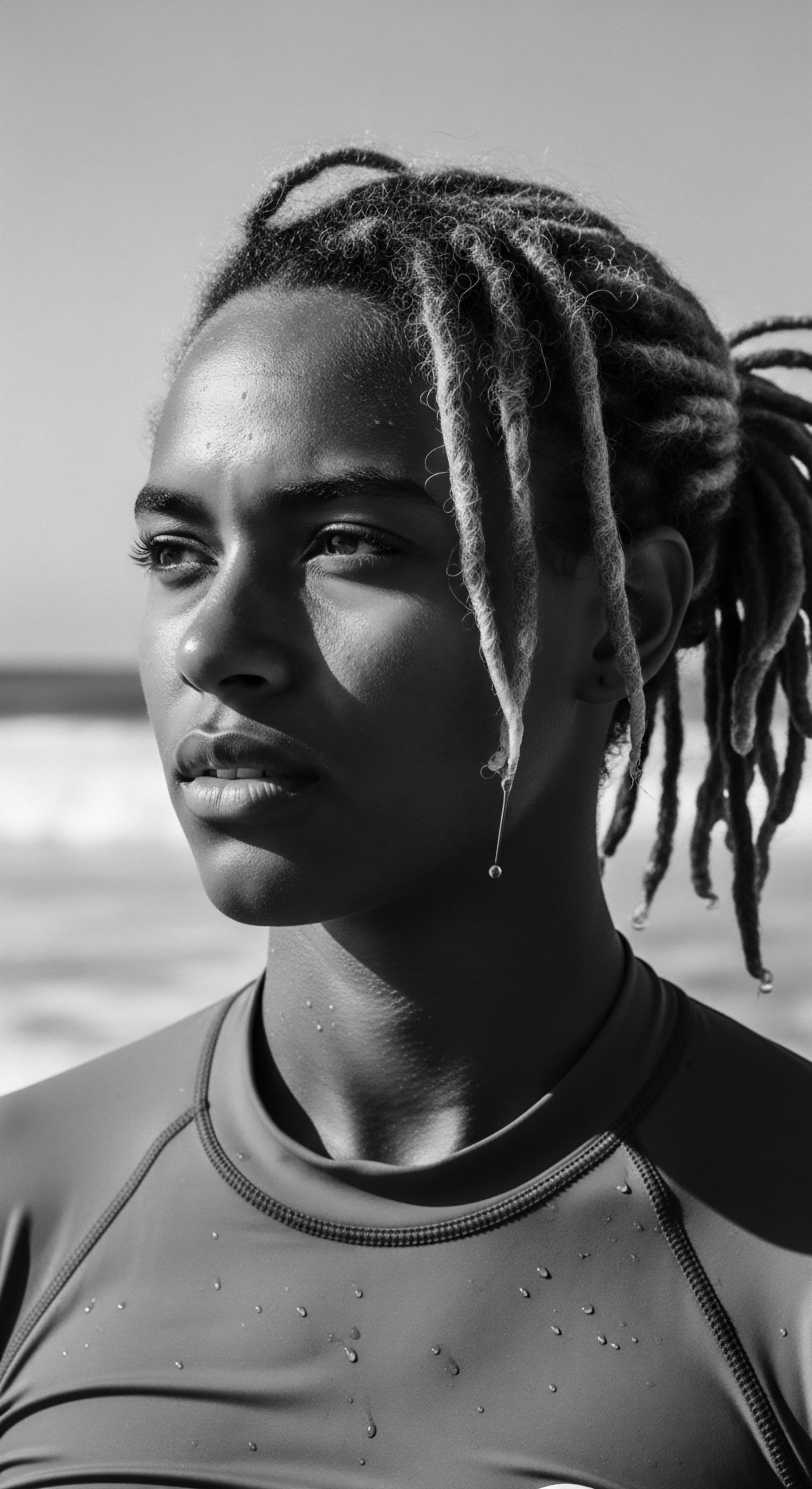
Fundamentals
The meaning of Natural Hair Cleansing extends far beyond a mere cosmetic routine; it signifies a profound dialogue with the very origins of care, particularly for textured hair. This practice, at its simplest, involves the purification of hair and scalp using substances derived directly from the earth’s abundant generosity. It is a return to elemental principles, recognizing the inherent wisdom held within botanical gifts, mineral deposits, and pure waters. This approach to cleansing honors the intrinsic biology of hair, seeking to maintain its delicate balance without stripping its vital oils or disrupting its natural rhythms.
Across generations, humanity has instinctively turned to nature for sustenance and healing. For hair, this meant discovering the gentle efficacy of plant extracts, the absorptive power of clays, and the softening qualities of various oils. These ancestral discoveries formed the bedrock of hair care for millennia, long before the advent of synthesized compounds.
The fundamental definition of Natural Hair Cleansing rests upon this direct connection to the natural world, fostering a relationship where hair is treated as a living extension of self, deserving of reverence and mindful attention. It is a process of removing impurities while simultaneously nourishing, a dual action that speaks to a holistic understanding of wellbeing.
Natural Hair Cleansing signifies a return to ancestral wisdom, purifying hair and scalp with earth-derived substances while honoring the intrinsic biology of textured strands.
The earliest forms of human hair care, predating recorded history, illustrate a deep reliance on local flora and geological formations. Indigenous communities worldwide, and especially those in Africa and the African diaspora, developed sophisticated methods for maintaining hair health using readily available resources. The designation of ‘natural’ in this context points to ingredients that have undergone minimal processing, retaining their innate properties and energetic signatures. This foundational understanding of Natural Hair Cleansing is not static; it is a living concept, continuously informed by inherited knowledge and an evolving appreciation for ecological harmony.
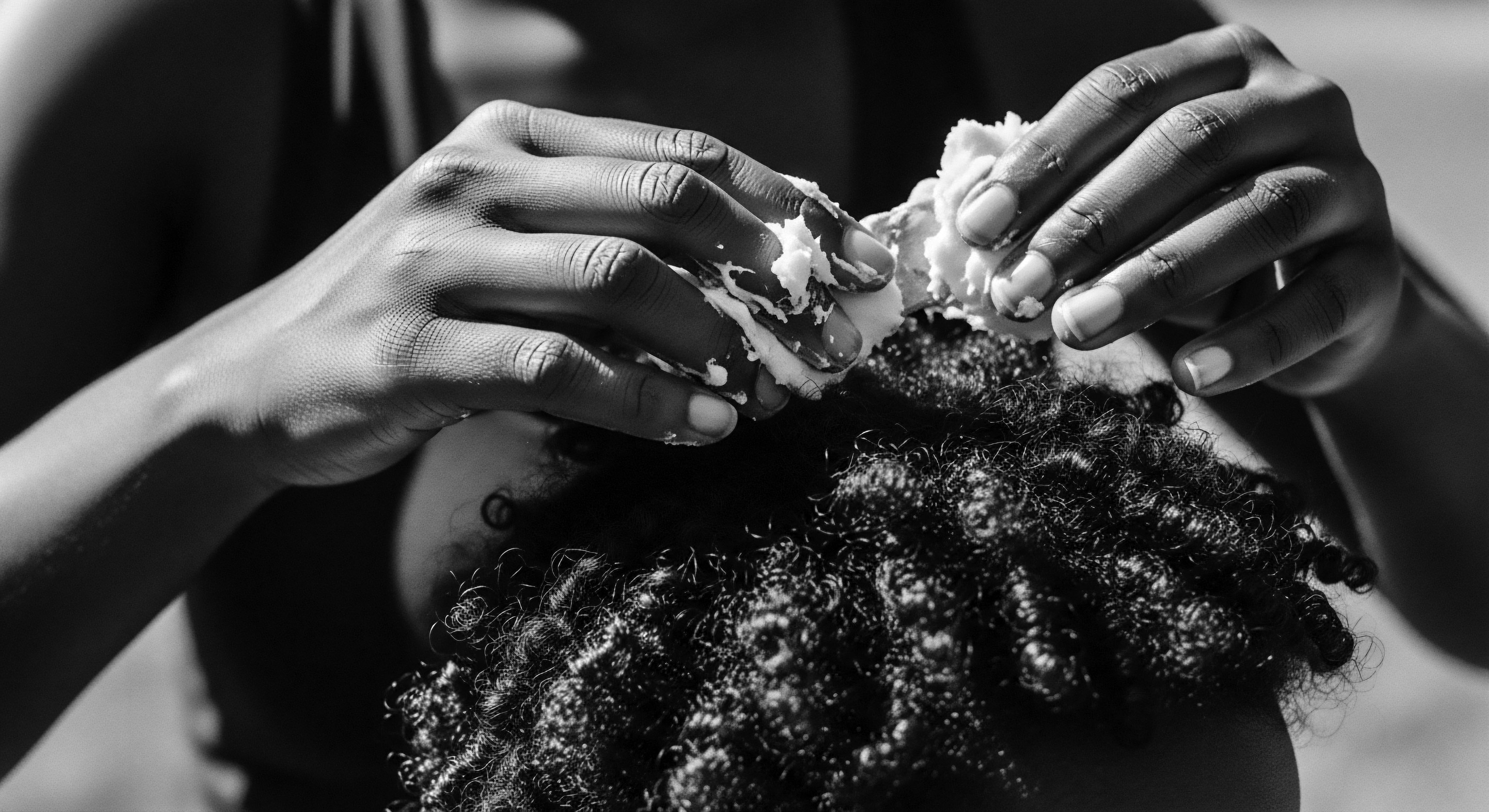
The Elemental Connection ❉ Earth’s Gentle Gifts
The purification process within Natural Hair Cleansing often begins with an acknowledgment of the earth’s bounty. Water, the universal solvent, stands as the primary medium, its purity essential for effective removal of debris and excess sebum. Beyond water, the ground itself yields powerful cleansing agents.
- Clays ❉ Various types, such as bentonite or kaolin, possess remarkable adsorptive qualities, drawing out impurities and toxins from the scalp without harsh abrasion. Their mineral composition also contributes to scalp health, providing micronutrients.
- Saponin-Rich Plants ❉ Certain botanicals, like soapnuts (Sapindus species) or yucca root, contain natural saponins that create a mild lather, gently lifting dirt and oil. These plant-based cleansers offer a tender touch, respecting the delicate lipid barrier of the hair and scalp.
- Herbal Infusions ❉ Decoctions from herbs such as rosemary, nettle, or hibiscus have been historically employed not only for their cleansing properties but also for their tonic effects on the scalp, stimulating circulation and promoting a healthy environment for hair growth.
These components represent the simplest, most direct pathways to hair purification, echoing practices that have sustained healthy hair traditions for generations. The inherent mildness of these natural substances is particularly beneficial for textured hair, which often requires a more gentle approach to preserve its moisture balance and structural integrity. The initial meaning of Natural Hair Cleansing, therefore, is rooted in this fundamental respect for hair’s delicate nature and the earth’s capacity to provide for its care.
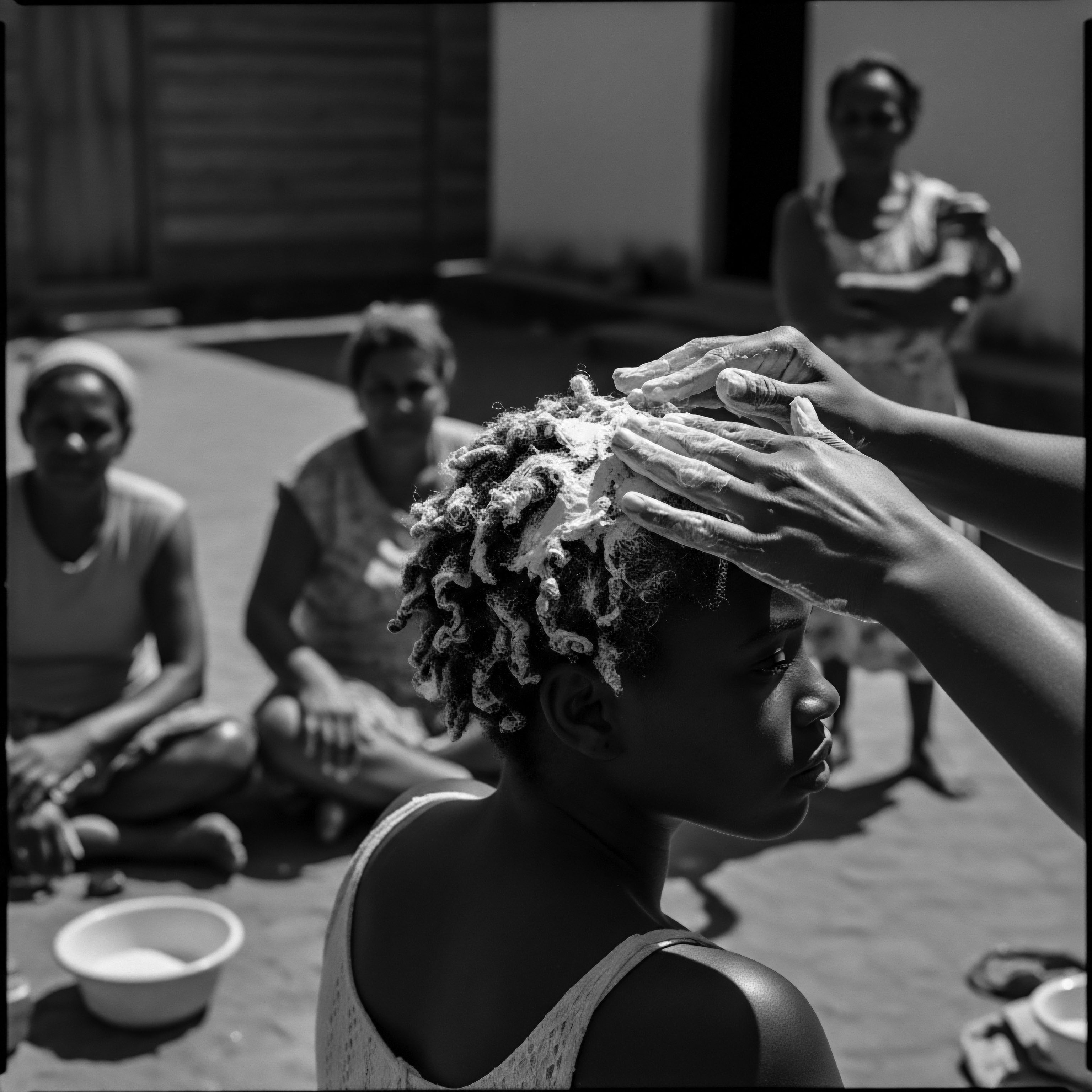
Intermediate
Moving beyond the foundational tenets, an intermediate comprehension of Natural Hair Cleansing reveals a more intricate understanding of its historical and cultural significance, particularly for those with textured hair. This involves recognizing the sophisticated knowledge systems that informed ancestral hair care, often passed down through oral traditions and communal practices. The meaning of Natural Hair Cleansing here expands to encompass not just the ‘what’ (natural ingredients) but the ‘how’ and ‘why’ – the ritualistic aspects, the communal bonds strengthened through shared care, and the deep symbolic connections woven into every strand.
For communities of African descent, hair has always served as a potent symbol of identity, status, and spiritual connection. The care of hair, including its cleansing, was rarely a solitary or purely utilitarian act. It was often a communal endeavor, a moment for storytelling, bonding, and the transmission of ancestral wisdom.
This holistic perspective views the scalp and hair as a living ecosystem, deserving of thoughtful attention that extends beyond mere superficial cleanliness. The intention behind the cleansing ritual, the selection of ingredients, and the very act of touch, all carried significant cultural weight.
Intermediate understanding of Natural Hair Cleansing uncovers its profound cultural significance, revealing communal rituals and inherited wisdom passed through generations.
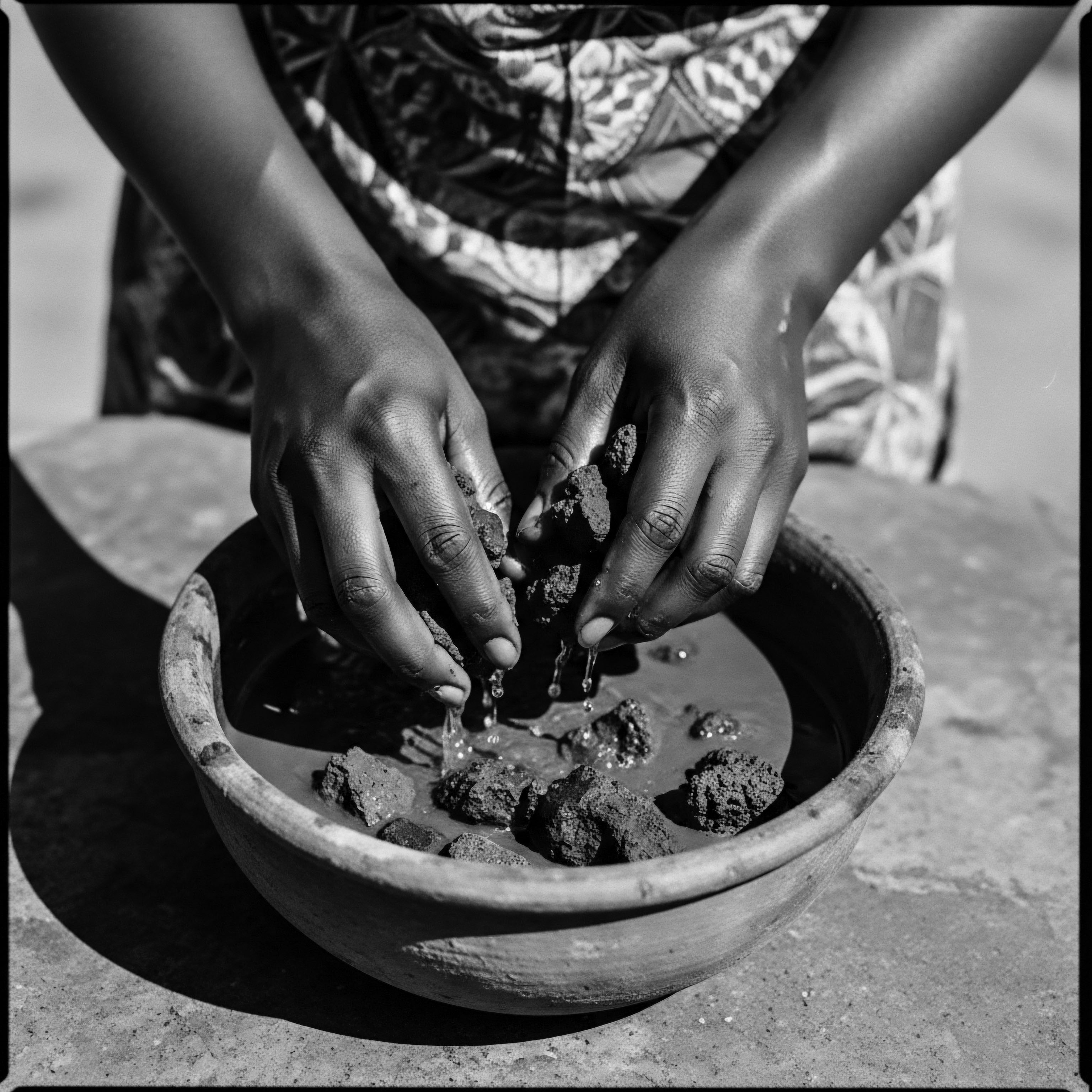
Traditional Cleansing Methods ❉ A Legacy of Ingenuity
The methods employed in traditional Natural Hair Cleansing demonstrate remarkable ingenuity and a deep understanding of botanical properties. These practices were not random applications but refined techniques developed over centuries, tailored to the specific needs of diverse textured hair types and environmental conditions. The process of cleansing was often integrated with other care rituals, forming a continuous cycle of nourishment and protection.
Consider the use of fermented rice water, a practice observed in several Asian cultures but with parallels in some African and Afro-diasporic traditions where similar fermentation processes were applied to other plant materials. The mild acidity and nutrient content of fermented liquids were recognized for their ability to cleanse gently while imparting strength and shine. Another example is the widespread application of various clays, often mixed with water or herbal infusions, to draw out impurities and condition the scalp. The selection of these agents was informed by empirical observation and inherited knowledge, a testament to ancestral scientific inquiry.
The concept of ‘co-washing’ or ‘conditioner washing’ in contemporary natural hair care finds its roots in these ancient practices. Many traditional cleansing methods did not rely on harsh detergents but rather on substances that offered a gentle purification while simultaneously conditioning the hair. This reflects an understanding that textured hair, prone to dryness, benefits from a cleansing process that preserves its natural moisture rather than stripping it away. The historical continuity of this gentle approach underscores its inherent value and enduring relevance.
| Traditional Agent Rhassoul Clay |
| Geographical/Cultural Origin North Africa (Morocco) |
| Primary Cleansing Mechanism Adsorption of impurities; ion exchange |
| Ancillary Benefits for Textured Hair Deep conditioning, scalp detoxification, mineral enrichment, improved elasticity. |
| Traditional Agent Soapnuts (Aritha) |
| Geographical/Cultural Origin Indian Subcontinent, parts of Africa |
| Primary Cleansing Mechanism Natural saponins create mild lather |
| Ancillary Benefits for Textured Hair Gentle cleansing without stripping, natural shine, soothing for sensitive scalps. |
| Traditional Agent Aloe Vera |
| Geographical/Cultural Origin Various African, Caribbean, and Indigenous cultures |
| Primary Cleansing Mechanism Saponins for mild cleansing; enzymatic action |
| Ancillary Benefits for Textured Hair Moisture retention, anti-inflammatory for scalp, promotes growth, detangling. |
| Traditional Agent Chebe Powder |
| Geographical/Cultural Origin Chad (Sahelian Africa) |
| Primary Cleansing Mechanism Traditional blend of herbs (often including Lavender Croton, Prunus Mahaleb, Resin, Clove) |
| Ancillary Benefits for Textured Hair While primarily for length retention and strength, it also helps seal in moisture during traditional "cleansing" and re-application rituals, preventing breakage. |
| Traditional Agent These diverse ancestral methods highlight a universal quest for gentle yet effective hair purification, often prioritizing moisture and scalp health for textured hair types. |
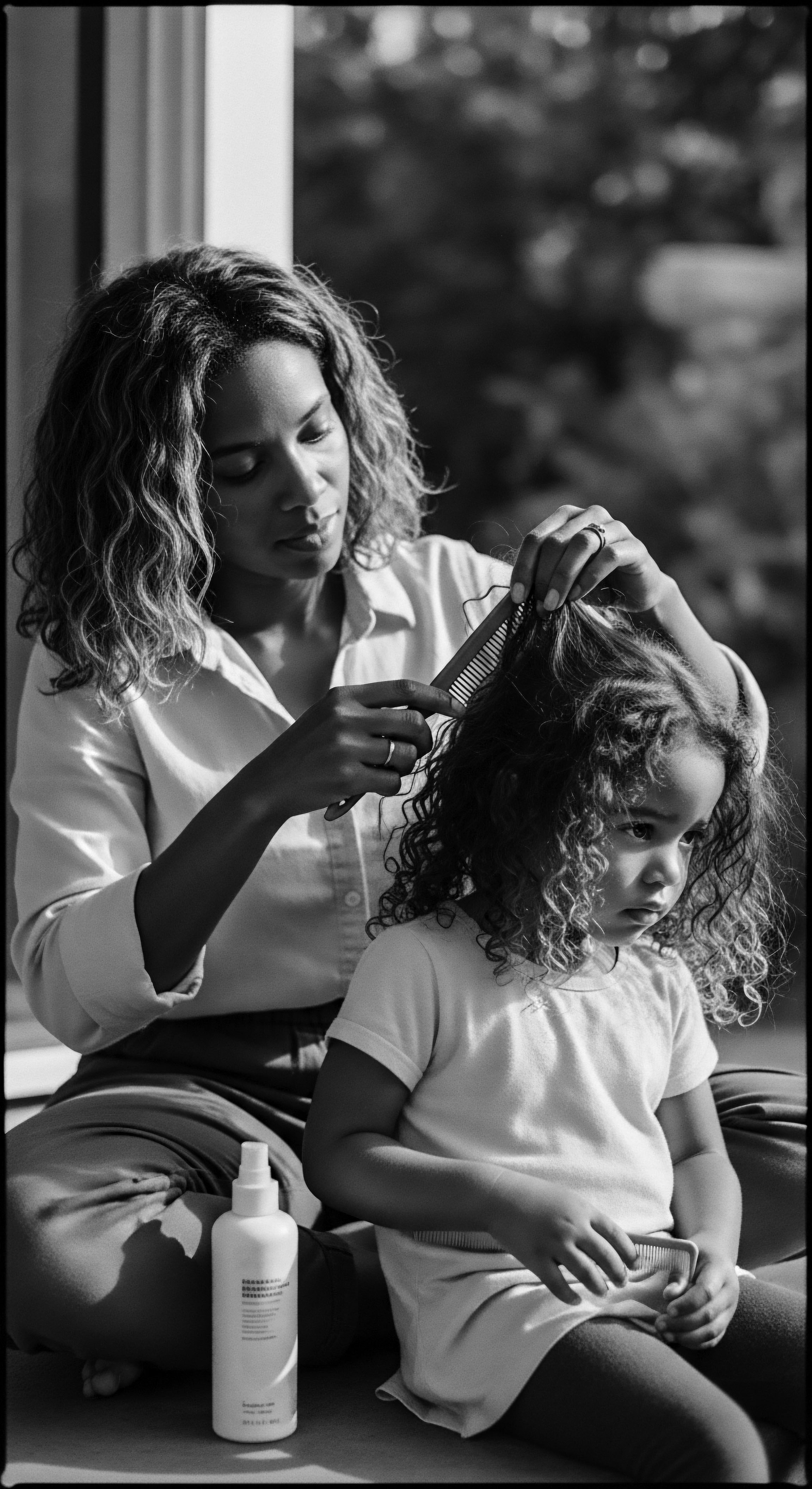
The Heritage of Care ❉ Beyond the Physical
The significance of Natural Hair Cleansing, at this intermediate level of understanding, transcends the purely physical act. It speaks to a heritage of self-care deeply intertwined with communal identity and spiritual wellbeing. For many Black and mixed-race communities, hair has been a canvas for expression, a marker of resistance, and a connection to ancestral lands and wisdom. Cleansing rituals were not merely about removing dirt; they were about purification, preparation for ceremonies, and the symbolic shedding of burdens.
The careful selection of natural ingredients, often gathered from the local environment, underscored a symbiotic relationship with the land. This practice reinforced a sense of belonging and stewardship, where the health of one’s hair was seen as mirroring the health of the community and the environment. The transmission of these cleansing techniques from elder to youth ensured the continuity of cultural practices, solidifying a living library of knowledge that adapted and persisted through historical shifts and challenges.
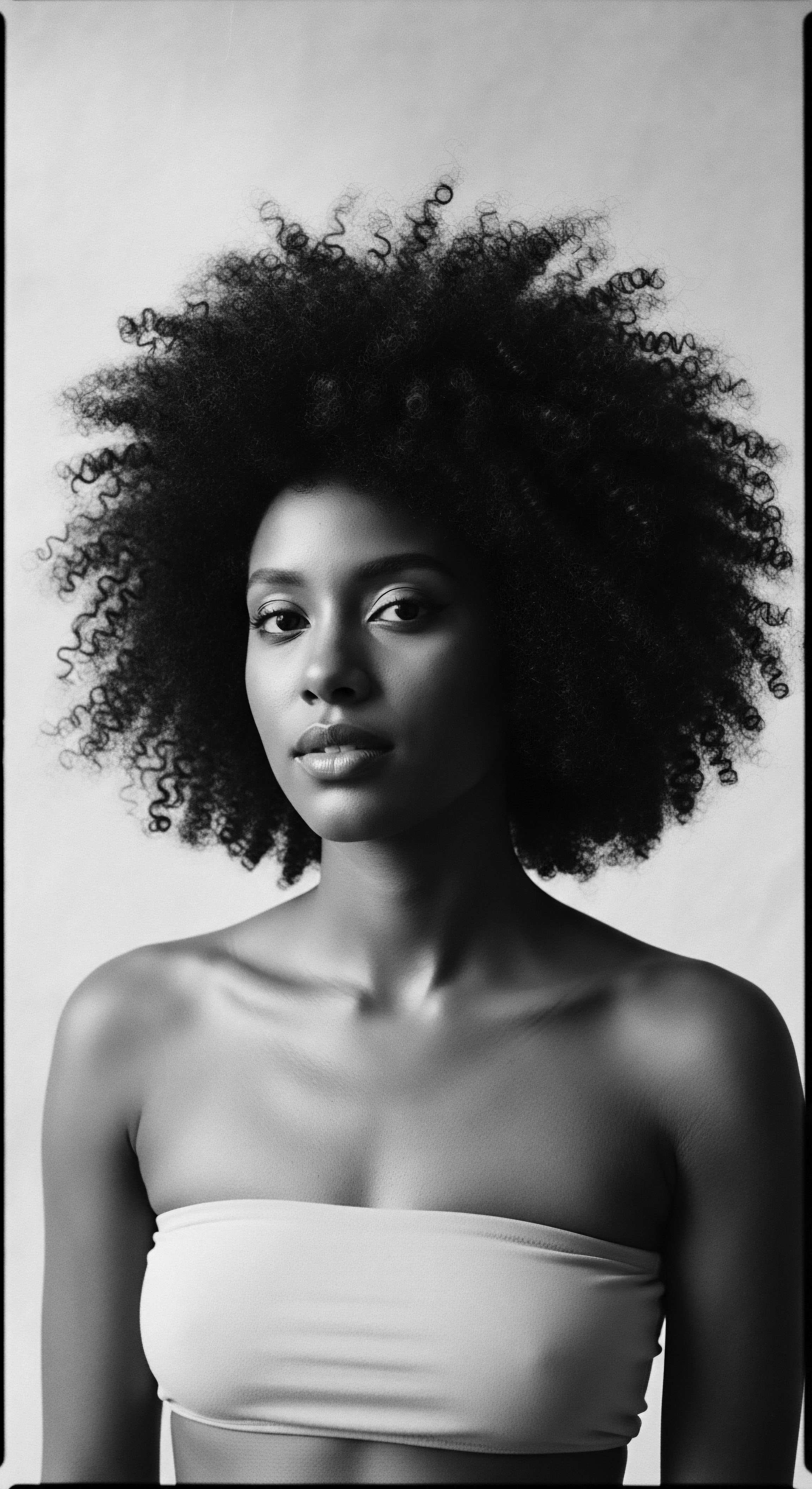
Academic
The academic elucidation of Natural Hair Cleansing posits it as a multifaceted historical, ethnobotanical, and biophysical phenomenon, rigorously examining its definition and meaning within the context of textured hair, particularly across Black and mixed-race experiences. This scholarly interpretation delineates Natural Hair Cleansing as the deliberate practice of purifying the hair shaft and scalp utilizing substances derived exclusively from biological or geological origins, characterized by their minimal chemical alteration and their capacity to interact synergistically with the inherent physiological and structural properties of diverse hair textures. Its scientific designation underscores an approach that respects the integrity of the hair’s cuticle, cortex, and medulla, along with the scalp’s microbiome, aiming to cleanse without compromising lipid barriers or protein structures, a critical consideration for the unique architecture of coiled, kinky, and wavy hair.
The academic lens reveals that the historical application of natural cleansers for textured hair was not simply an absence of synthetic alternatives; rather, it constituted a sophisticated, empirically developed system of care. These ancestral methodologies, often dismissed or undervalued during periods of colonial influence, frequently exhibited a nuanced understanding of surface chemistry, emollients, and anti-inflammatory properties long before these concepts were formalized in Western science. The profound significance of these practices extends into the realm of cultural resilience, where the preservation of indigenous hair care traditions served as a quiet yet powerful act of defiance against imposed beauty standards that often denigrated natural hair textures.
Academic understanding of Natural Hair Cleansing reveals it as a sophisticated historical and biophysical practice, preserving textured hair integrity and embodying cultural resilience against imposed beauty norms.
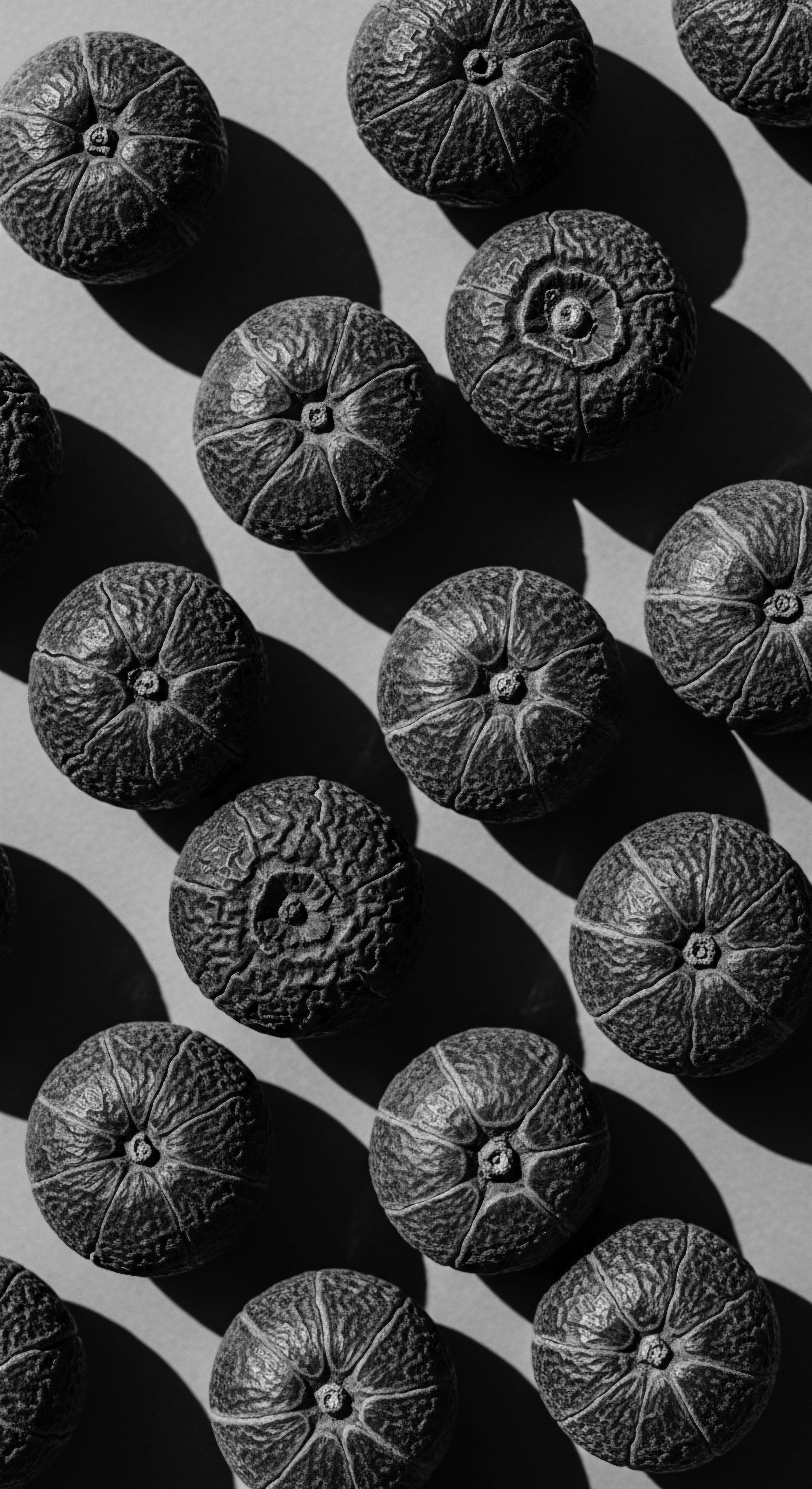
Phytochemical Efficacy and Ancestral Wisdom ❉ A Deeper Look
A rigorous examination of traditional African hair cleansing practices, for instance, offers compelling insights into their scientific validity. Many plants historically employed for hair purification contain naturally occurring compounds with demonstrable cleansing and conditioning attributes. The saponins , glycosides found in various plant species, are particularly noteworthy.
These compounds, upon contact with water, form a stable foam capable of emulsifying oils and suspending particulate matter, thereby facilitating their removal from hair and scalp. Their mild surfactant properties contrast sharply with the often harsh, sulfate-based detergents prevalent in conventional shampoos, which can excessively strip the natural sebum from textured hair, leading to dryness, brittleness, and increased susceptibility to breakage.
Consider the widespread use of plants like Sapindus mukorossi (soapnut) or Acacia concinna (shikakai) in various indigenous hair care systems across the globe, including parts of Africa and Asia. These botanicals are rich in triterpenoid saponins. A study by K. S.
Kumar and R. R. Singh (2007) on the phytochemistry of Sapindus mukorossi highlights its significant saponin content and its traditional use as a natural detergent, confirming its capacity for gentle cleansing without causing undue irritation or dehydration of the skin and hair shaft. This empirical validation of ancestral knowledge underscores a critical aspect of Natural Hair Cleansing ❉ its alignment with the biological needs of textured hair, which inherently requires a higher degree of moisture retention due to its coil structure and often slower distribution of natural oils from the scalp along the hair strand.
The deliberate choice of these saponin-rich plants, often combined with mucilaginous botanicals like aloe vera or flaxseed, points to an advanced, intuitive ethnobotanical understanding. The mucilage acts as a humectant and detangler, providing slip and moisture, thereby mitigating any potential drying effects of the saponins and enhancing the overall conditioning experience. This layered approach to cleansing, where purification is intertwined with conditioning and nourishment, represents a sophisticated system tailored to the specific needs of textured hair, minimizing friction and maximizing moisture retention.
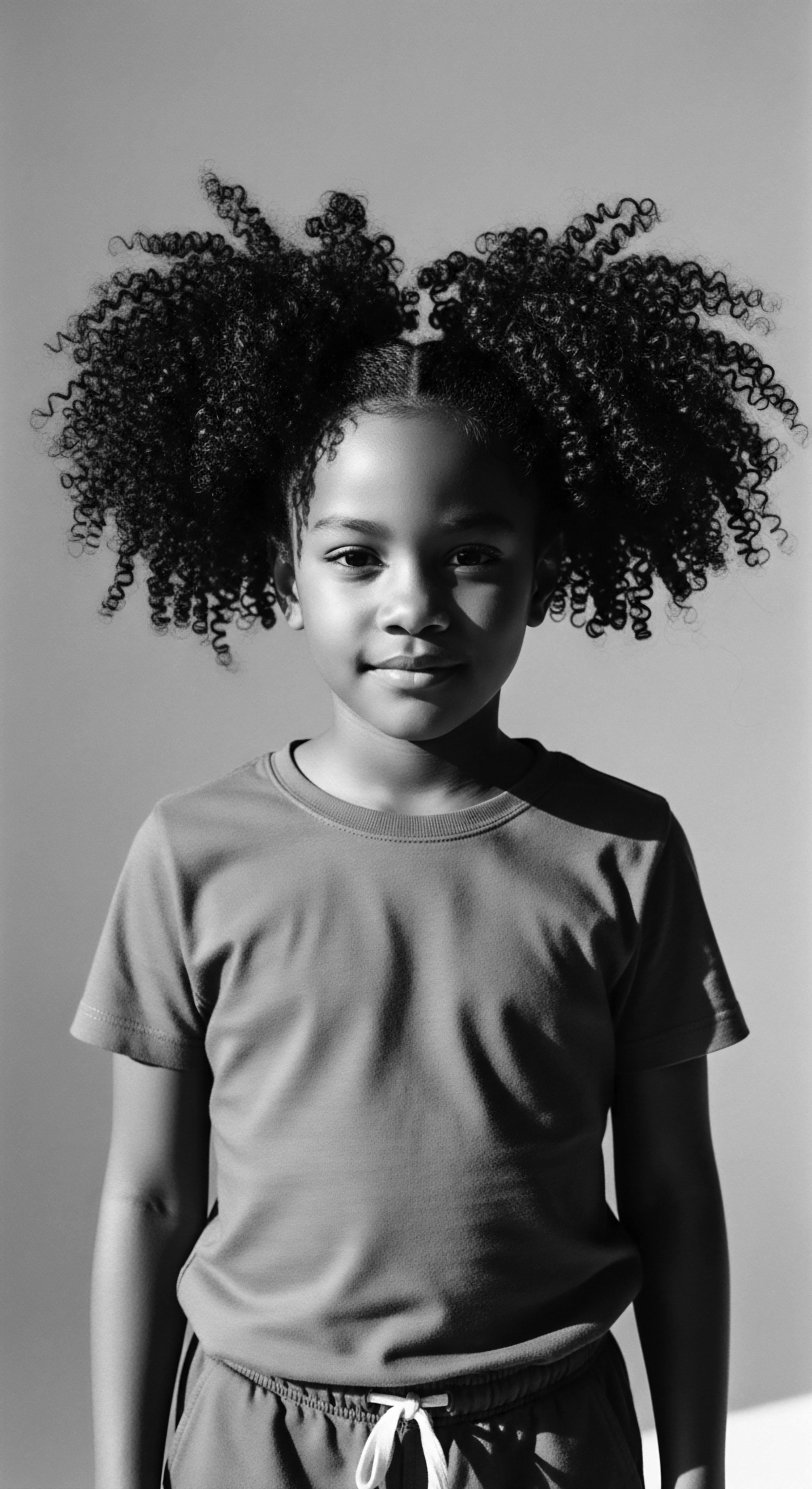
The Socio-Historical Impact ❉ Hair as a Locus of Identity and Resistance
Beyond the biochemical efficacy, the academic meaning of Natural Hair Cleansing is inextricably linked to its socio-historical implications for Black and mixed-race communities. During periods of enslavement and colonialism, African hair textures and traditional care practices were systematically denigrated, often deemed “unclean” or “unruly” in contrast to Eurocentric beauty ideals. This cultural assault aimed to strip individuals of their identity and connection to their heritage. The forced adoption of harsh soaps and straightening methods not only damaged hair physically but also inflicted profound psychological harm, fostering self-rejection and disconnection from ancestral ways.
The resurgence of Natural Hair Cleansing practices in contemporary times, particularly within the natural hair movement, therefore represents more than a trend; it is a profound act of reclamation and self-determination. It signifies a conscious rejection of oppressive beauty standards and a deliberate re-engagement with ancestral wisdom. This movement, often rooted in shared experiences of discrimination and a collective desire for authenticity, has led to a re-evaluation of traditional ingredients and methodologies. The academic analysis reveals that the choice to cleanse naturally is often a political statement, a cultural affirmation, and a pathway to holistic wellness that recognizes the interconnectedness of physical health, mental wellbeing, and cultural identity.
The long-term consequences of this reclamation are significant. By prioritizing gentle, natural cleansing, individuals with textured hair are better able to maintain the structural integrity and health of their strands, reducing breakage and promoting length retention. This physical benefit is paralleled by psychological liberation, as individuals find freedom in embracing their natural texture and the historical legacy it carries.
The communal sharing of knowledge about natural cleansing techniques, often through digital platforms and community gatherings, has also strengthened intra-group bonds, fostering a sense of solidarity and collective empowerment. The very act of choosing a natural cleansing regimen becomes a daily ritual of self-love and ancestral homage, contributing to a broader cultural reawakening and a healthier relationship with one’s inherited hair identity.
- Decolonization of Beauty ❉ Natural Hair Cleansing actively challenges Eurocentric beauty standards by validating traditional African and Afro-diasporic hair care practices, fostering a sense of pride in natural texture.
- Biophysical Compatibility ❉ The inherent properties of natural cleansers (e.g. saponins, clays) are often more compatible with the delicate protein and lipid structures of textured hair, minimizing moisture loss and mechanical damage.
- Ecological Stewardship ❉ A reliance on natural, often locally sourced ingredients for cleansing promotes sustainable practices and reduces exposure to synthetic chemicals, aligning hair care with broader environmental consciousness.
- Intergenerational Knowledge Transfer ❉ The renewed interest in Natural Hair Cleansing facilitates the revival and dissemination of ancestral knowledge, ensuring that traditional wisdom regarding hair care continues to thrive across generations.
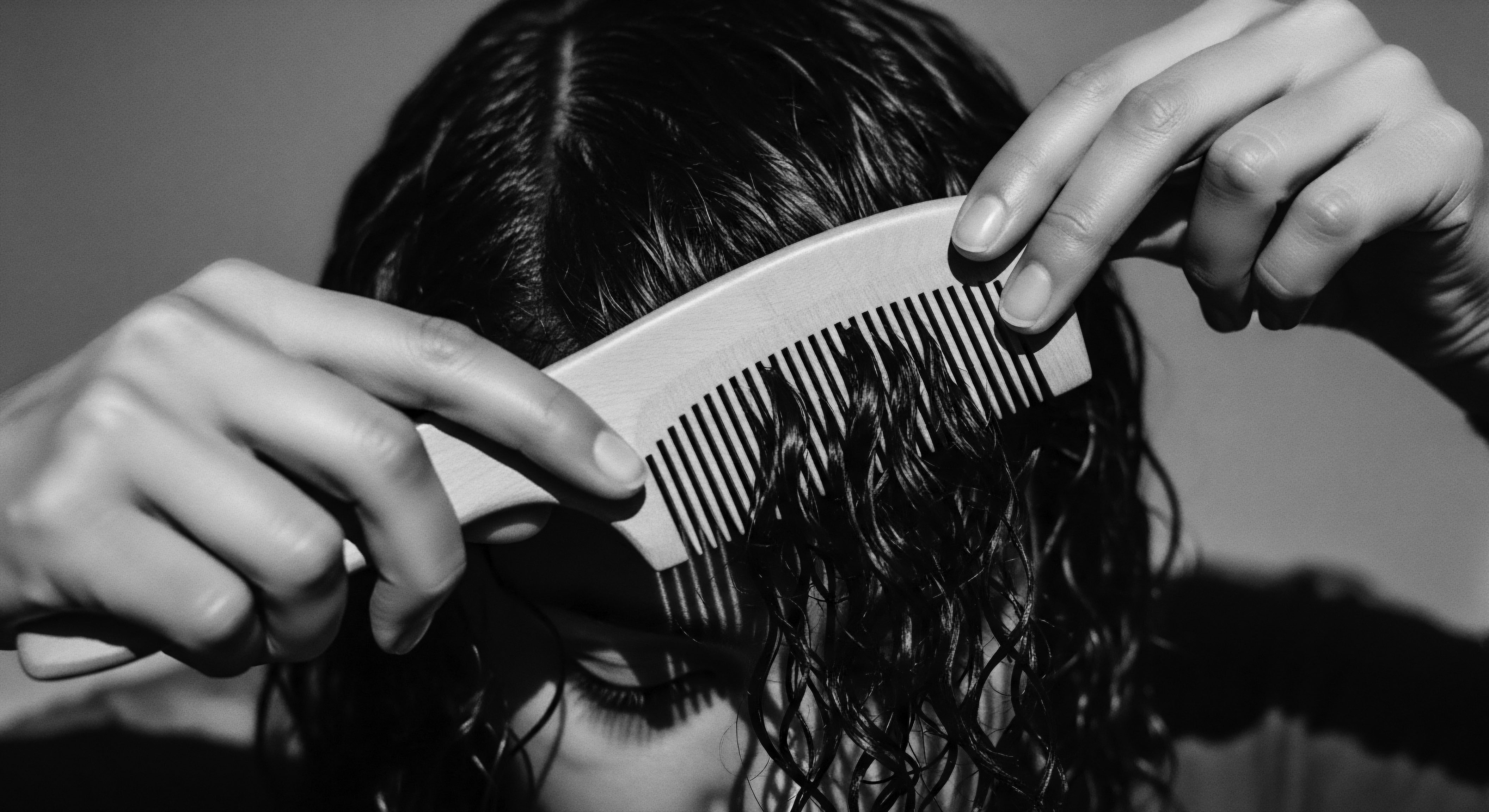
Reflection on the Heritage of Natural Hair Cleansing
The journey through the definition of Natural Hair Cleansing, from its elemental beginnings to its profound academic and cultural resonance, culminates in a quiet contemplation of its enduring heritage. This is not merely a practice; it is a living legacy, a whispered story carried within each coil and curl. The very act of cleansing with nature’s offerings connects us to an unbroken chain of ancestral wisdom, a testament to the ingenuity and resilience of those who came before us. It reminds us that care for textured hair has always been more than maintenance; it has been an act of preservation, a silent declaration of identity, and a celebration of inherent beauty.
The ‘Soul of a Strand’ ethos finds its deepest expression within this understanding. Each strand, a delicate helix of protein, carries not only its genetic blueprint but also the echoes of countless hands that have tended to it across time. The gentle touch of clay, the subtle lather of a saponin-rich plant, the purifying embrace of water – these are not just chemical reactions; they are continuations of ancient rituals, moments of sacred connection. As we engage in Natural Hair Cleansing, we are not simply cleaning our hair; we are participating in a timeless conversation, honoring the wisdom embedded in our very being.
This heritage is a wellspring of strength, a source of profound knowledge that continues to nourish and guide our paths toward authentic self-expression and holistic wellbeing. The path of Natural Hair Cleansing is a continuous rediscovery, a joyous affirmation of who we are and from whom we descend.
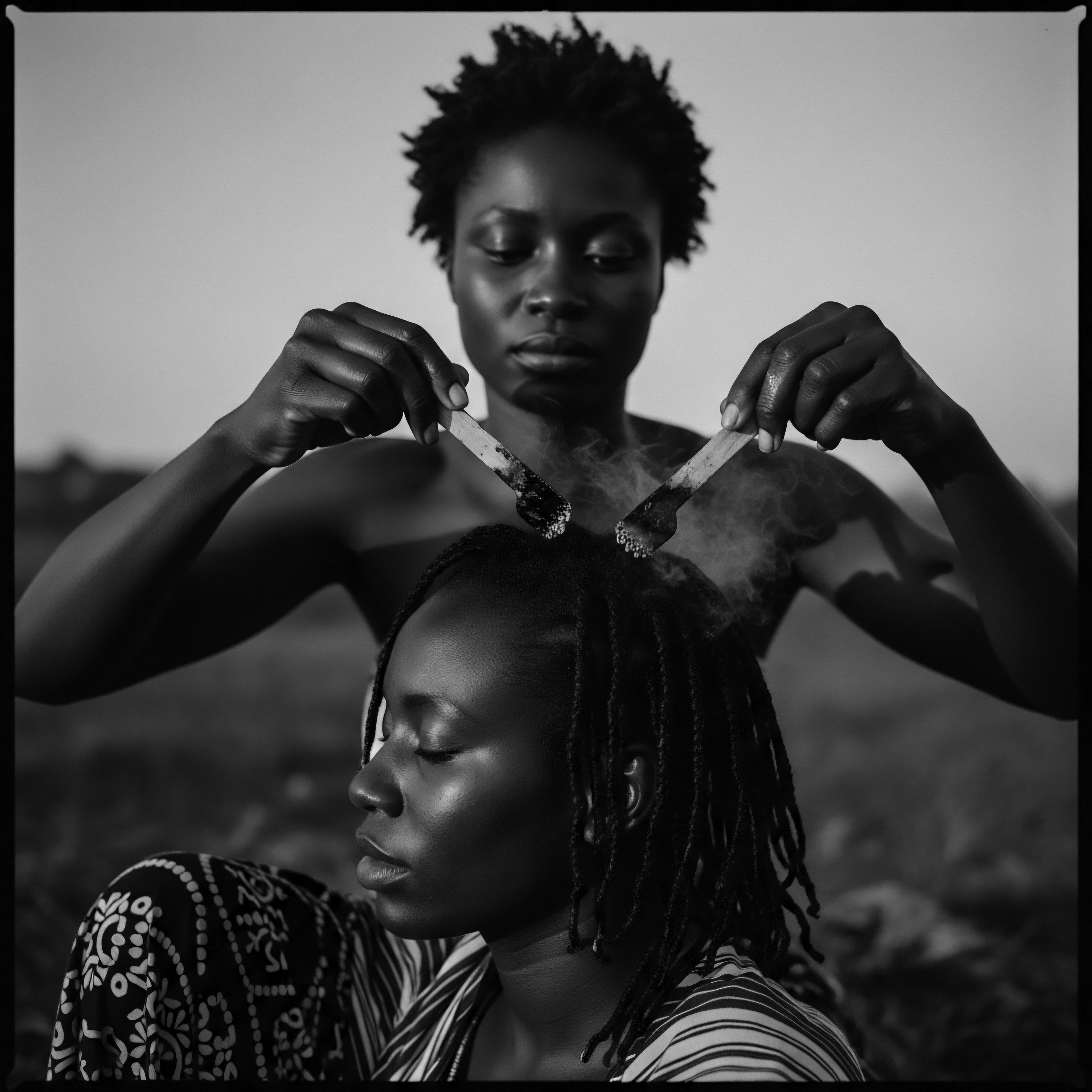
References
- Kumar, K. S. & Singh, R. R. (2007). Phytochemistry of Sapindus mukorossi Gaertn. (Soapnut) ❉ A Review. International Journal of Green Pharmacy, 1(1), 14-19.
- Mshana, N. R. (1987). Traditional Hair Care in Tanzania ❉ An Ethnobotanical Survey. Journal of Ethnopharmacology, 21(3), 227-234.
- Zaid, M. (2007). The use of Moroccan Ghassoul Clay in traditional and modern cosmetology. Cosmetics & Toiletries, 122(6), 61-66.
- Oppong, J. R. (2002). Traditional Hair Care Practices in Ghana. In African Ethnobotany ❉ Herbs, Traditions, and the Healing Arts. CRC Press.
- Byrd, A. D. & Tharps, L. D. (2001). Hair Story ❉ Untangling the Roots of Black Hair in America. St. Martin’s Press.
- Bankhead, K. (2018). Hair Politics ❉ An Intersectional Analysis of Black Women’s Hair in the Workplace. Gender, Work & Organization, 25(1), 84-98.
- Blay, K. A. (2017). Hair Matters ❉ Beauty, Power, and Black Women’s Consciousness. Duke University Press.
- Ebony, R. (2018). Natural Hair and the Black Woman ❉ A History of Identity and Self-Acceptance. University of California Press.
